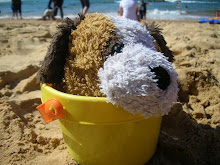War and Peace - Leo Tolstoy
The first thing that everybody learns about War and Peace is that it is long; really, really long. This is true, but it still only took me around five weeks to read, which is hardly backbreaking, and it is definitely worth the effort.
Length is, in fact, the key to the novel’s success. It allows Tolstoy to describe scenes in fantastically vivid detail, and to change perspective throughout. We experience the Napoleonic wars through the eyes of soldiers, aristocrats and even those of the omniscient author musing on the nature of history itself. The enormous scope enables War and Peace to encompass a range of ideas that appear contradictory at times. The main storylines have a soap opera quality but the author argues against the role of the individual in history; it embraces Russian patriotism at the same time as critiquing it; the battle scenes are both thrilling and devastatingly bleak. Instead of feeling disjointed, the book feels generously accommodating.
Incidentally, critics that describe the book as a panoramic cross-section of Russian society are off the mark – the peasants barely get a look in as the book dwells on the concerns of the upper and middle classes.
One fascinating technique is the interweaving of fictional characters with historical events. Tolstoy describes the inner selves of real personages to fascinating and convincing effect. In one striking scene, we find Napoleon himself being washed and dressed by his valet whilst pondering a looming battle.
A mention is deserved, too, for the new translation from Anthony Briggs. According to some experts some of the poetry is lost but I appreciated the emphasis on readability and immediacy. This approach was particularly effective in the battle scenes.


0 Comments:
Post a Comment
<< Home